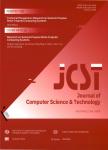Prevention from Soft Errors via Architecture Elasticity
Prevention from Soft Errors via Architecture Elasticity作者机构:State Key Lab of Computer Architecture and Microprocessor Research CenterInstitute of Computing Technology Chinese Academy of Sciences University of Chinese Academy of Sciences Loongson Technology Corporation Limited IBM Research-China
出 版 物:《Journal of Computer Science & Technology》 (计算机科学技术学报(英文版))
年 卷 期:2014年第29卷第2期
页 面:247-254页
核心收录:
学科分类:0808[工学-电气工程] 08[工学] 0835[工学-软件工程] 0701[理学-数学] 0811[工学-控制科学与工程] 081201[工学-计算机系统结构] 0812[工学-计算机科学与技术(可授工学、理学学位)]
基 金:supported by the National Science and Technology Major Project under Grant Nos.2009ZX01028-002-003,2009ZX01029-001-003 the National Natural Science Foundation of China under Grant Nos.61221062,61100163,61133004,61232009,61222204,61221062,61303158 the Strategic Priority Research Program of the Chinese Academy of Sciences under Grant No.XDA06010403 the Ten Thousand Talent Program of China
主 题:soft error energy efficiency architecture elasticity
摘 要:Due to the decreasing threshold voltages, shrinking feature size, as well as the exponential growth of on-chip transistors, modern processors are increasingly vulnerable to soft errors. However, traditional mechanisms of soft error mitigation take actions to deal with soft errors only after they have been detected. Instead of the passive responses, this paper proposes a novel mechanism which proactively prevents from the occurrence of soft errors via architecture elasticity. In the light of a predictive model, we adapt the processor architectures h01istically and dynamically. The predictive model provides the ability to quickly and accurately predict the simulation target across different program execution phases on any architecture configurations by leveraging an artificial neural network model. Experimental results on SPEC CPU 2000 benchmarks show that our method inherently reduces the soft error rate by 33.2% and improves the energy efficiency by 18.3% as compared with the static configuration processor.



